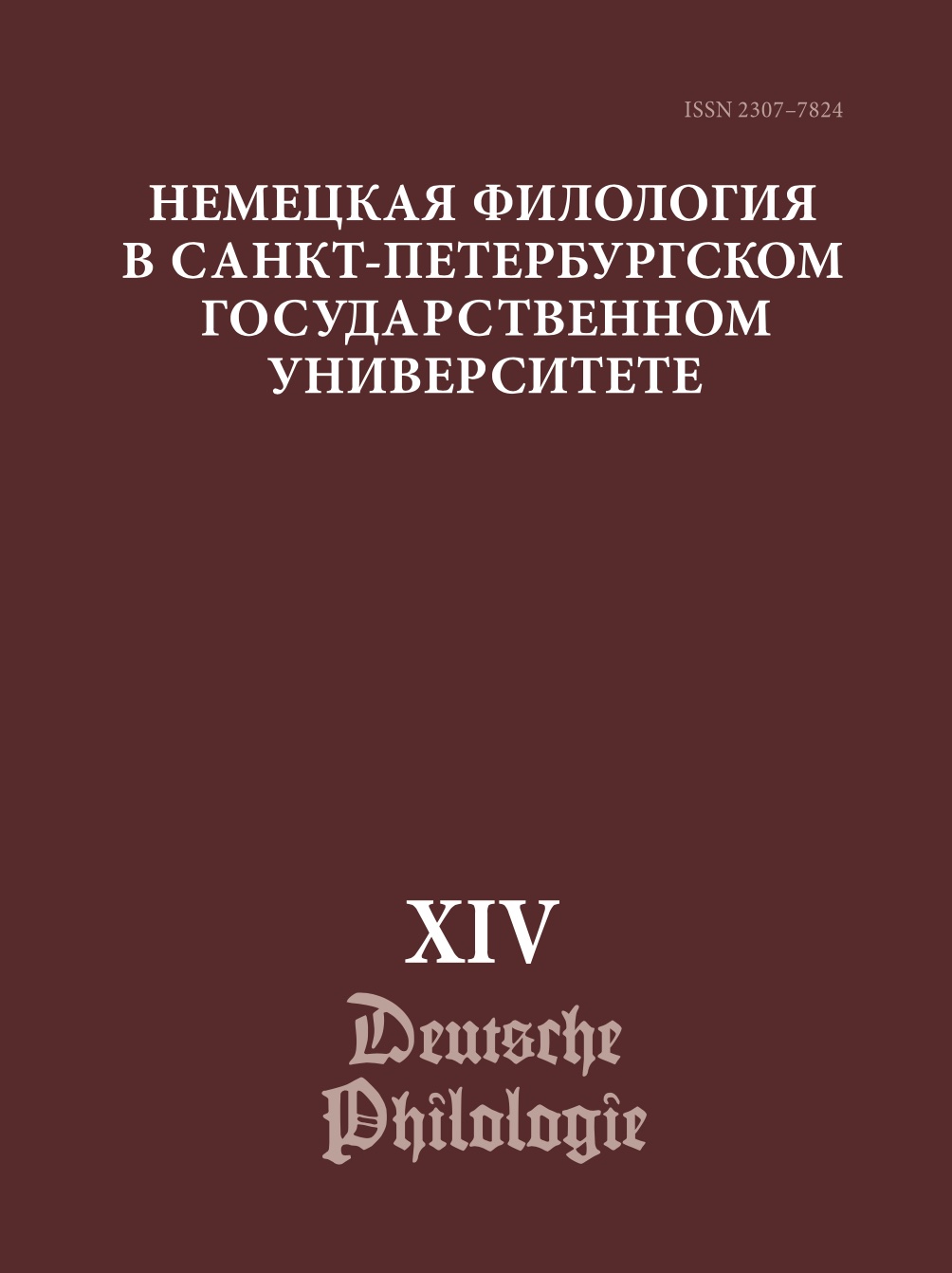VERBAL MEANS OF EXPRESSING AGGRESSION IN THE GERMAN SERIES BABYLON. BERLIN
DOI:
https://doi.org/10.21638/spbu33.2024.119Abstract
This paper aims to identify and analyze verbal means of expressing aggression in the German TV series “Babylon-Berlin”, filmed in the neo-noir genre. Addressing the problem of verbal violence, which is actively studied in modern media discourse, by the example of a film determines the novelty of the research. The objectives of the work, carried out using component and psycholinguistic analysis, include consideration of the concept of verbal aggression as a destructive type of verbal behaviour, highlighting its main functions, as well as analyzing the verbal means of its expression. In relation to the material being studied, evocative and artistic functions are noted. Taking into account the classifications of verbal aggression existing in modern linguistics and psychology, its explicit (direct insults, rude orders, threats) and implicit forms (hints, mockery, veiled threats) are distinguished, and characteristic verbal means of their expression are also considered. Particular attention is paid to invective vocabulary, mainly in the form of direct nominations containing offensive references to the interlocutor regarding his mental, physical and other deficiencies. Personal pronouns (transition to you) and imperative constructions are distinguished as grammatical markers. In addition, using the example of a long dialogue between two characters in the series, the importance of taking into account the means of non-verbal interaction (postures, facial expressions, gestures, glances, intonations of communicants, actions of third parties in the frame, voice-over music) is noted as the key to the correct interpretation of aggressive speech actions that do not have distinct markers on the surface of speech.
Keywords:
verbal aggression, neo-noir, television series, invective
Downloads
References
Литература
References
Downloads
Published
How to Cite
Issue
Section
License
Условия передачи авторских прав на статьи и рецензии, опубликованные в ежегодном периодическом издании «Немецкая филология» регулируются условиями Лицензионного Договора автора с Санкт-Петербургским государственным университетом. В соответствии с Лицензионным Договором опубликованные материалы находятся в открытом доступе, а авторам бесплатно предоставляется неограниченные возможности их распространения и самостоятельного архивирования.




